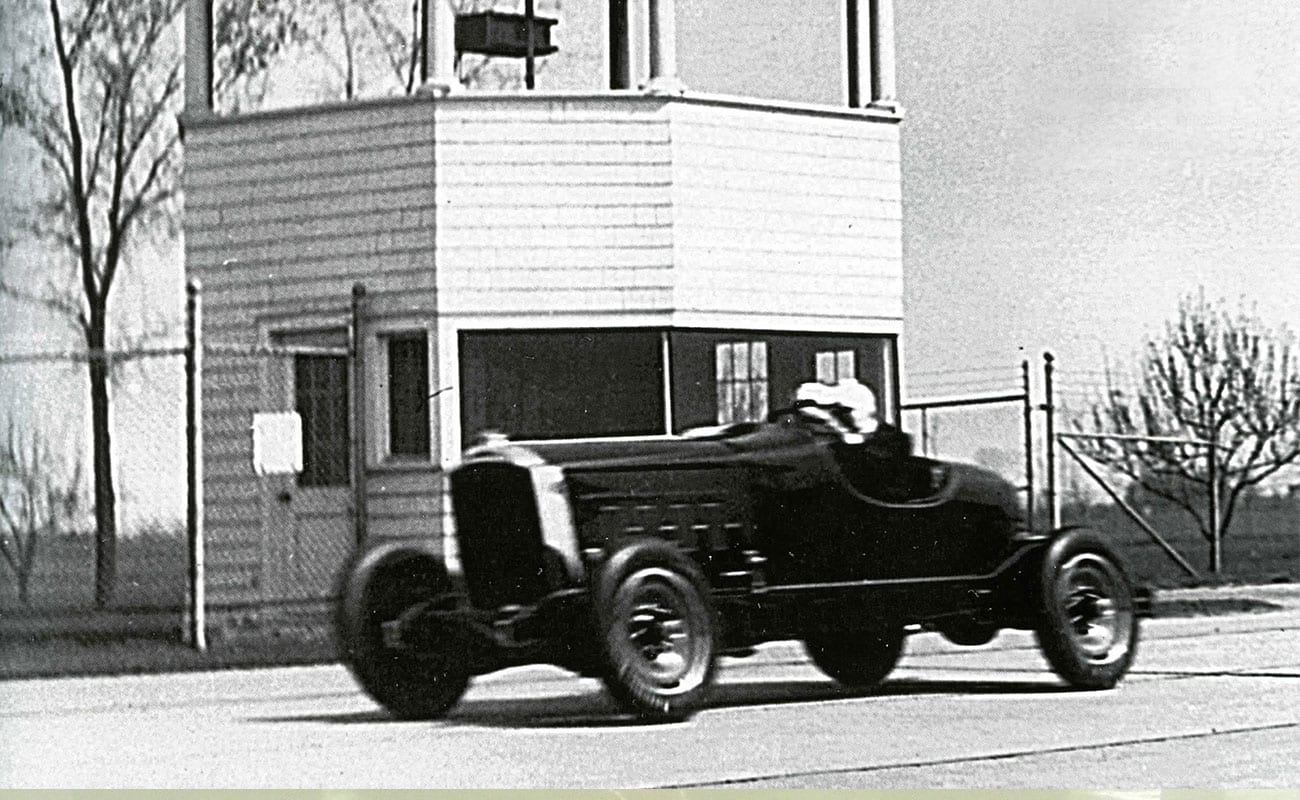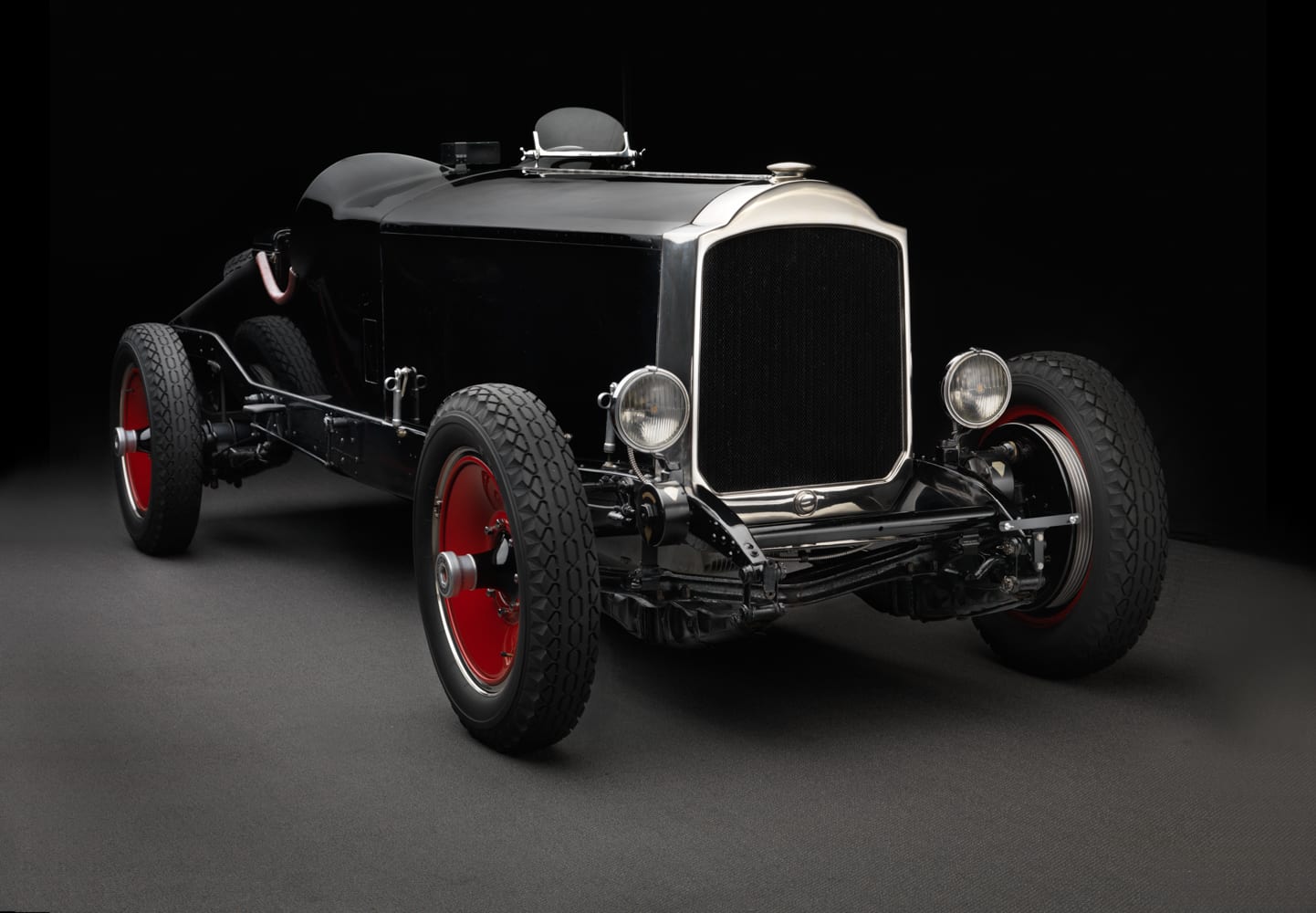Tech Specs
Eight-cylinder L-head in-line engine, nine main bearings, 384 cubic inches, 106 hp at 3200 rpm.
Before/After
1927 Packard


About the 1927 Packard Prototype Speedster
In the fall of 1926, while visiting the Paris Automobile Salon, Colonel Jesse Vincent enjoyed “a fast ride through the city” with Ettore Bugatti in the latter’s latest car. Similarly, Vincent, Packard’s chief engineer, used Detroit streets for his fast drives until the Packard Proving Grounds (where a world speed record of 148.17mph was set in June 1928 that would remain unbroken until Monza opened after World War II) offered a more fitting venue.
Thus far Vincent had indulged his penchant for speed with special prototypes but he hoped the new facility would encourage faster production Packards. Persuading Alvan Macauley and the conservative members of the board that the company should introduce high performance models would not be easy. His first prototype speedster was supercharged, which would be unacceptable to management. Consequently, three more prototypes in various body styles followed using less noticeable methods to increase power. Having fulfilled their function as test mules, they were sold in December 1927. Among the three was the display car in which Briggs Cunningham had enjoyed a pre-purchase 100 mile per hour lap of the yet-unopened proving ground track driven by Jesse Vincent. A subsequent experimental car, popularly known as the Vincent Speedster, served as the production prototype for the 626 Speedster that Packard cautiously introduced with minimal advertising for the 1929 model year, building just 24 examples.
Following his purchase of the display car, Briggs took off the four-seater body and replaced it with one resembling the Vincent Speedster. As his daily driver while an engineering student at Yale, this car and another of those sold that December underwent extensive chassis dynamometer testing by the university.
At the same time Briggs made plans to upgrade the display car with a dual-windshield torpedo body that he had already commissioned LeBaron to design. Alas, pleas to his mother for an advance to have the body built were met with stony silence. And we are lucky to have what you see here – a genuine, original Packard hot-rod.
Photos – Peter Harholdt









